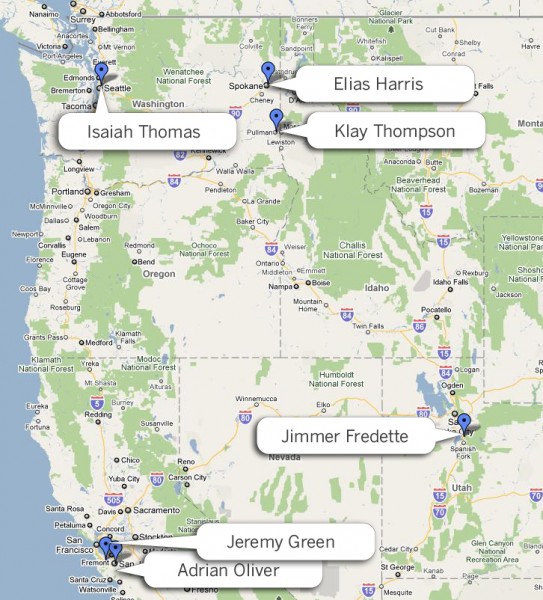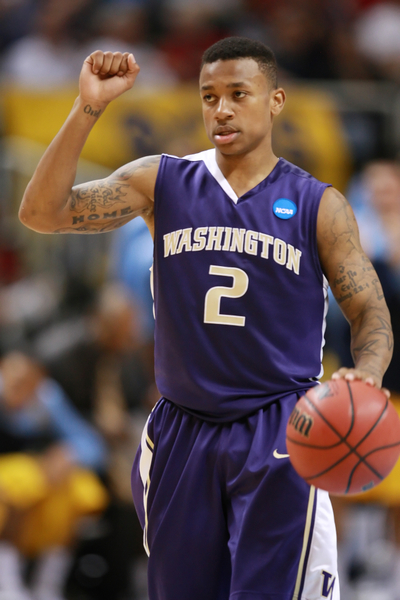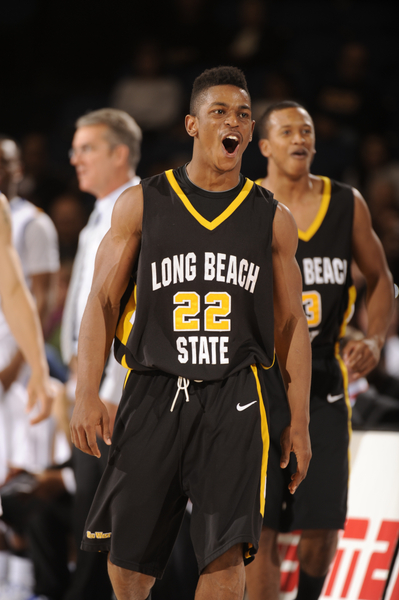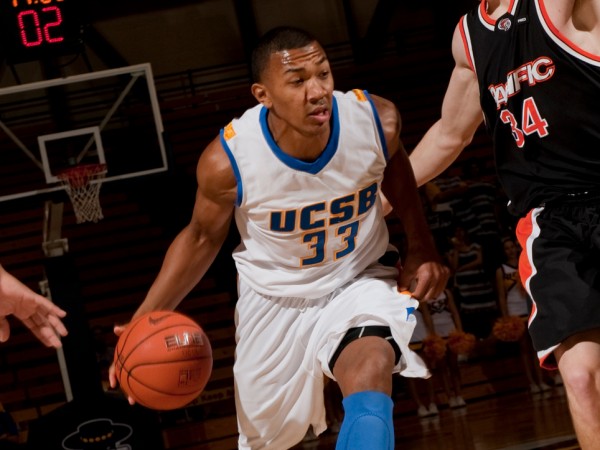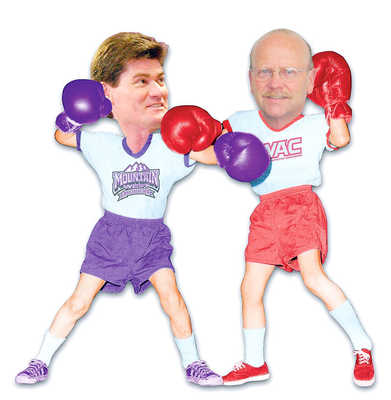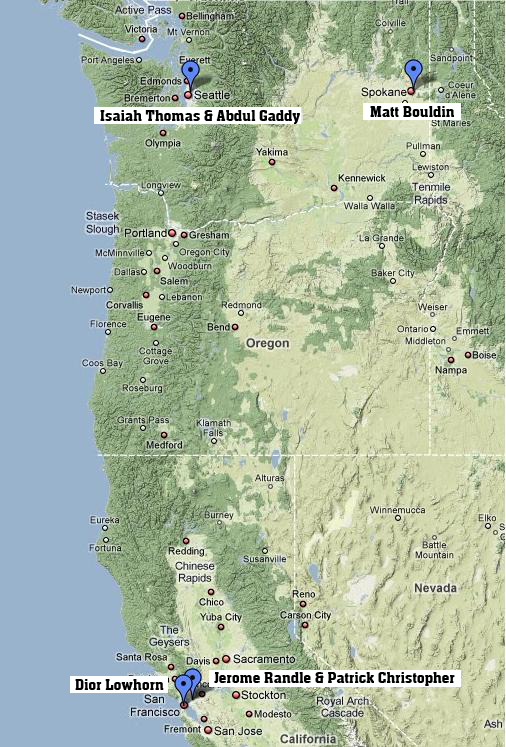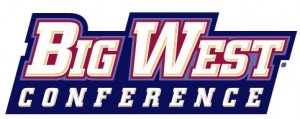RTC 2010-11 Impact Players – Northwest Region
Posted by rtmsf on November 4th, 2010Welcome to our RTC Impact Players series. The braintrust has gone back and forth on this and we’ve finally settled on a group of sixty players throughout ten geographic regions of the country (five starters plus a sixth man) to represent the who and where of players you should be watching this season. Seriously, if you haven’t seen every one of these players ball at least once by the end of February, then you need to figure out a way to get a better television package. As always in a subjective analysis such as this, some of our decisions were difficult; many others were quite easy. What we can say without reservation is that there is great talent in every corner of this nation of ours, and we’ll do our best to excavate it over the next five weeks in this series that will publish on Mondays and Thursdays. Each time, we’ll also provide a list of some of the near-misses as well as the players we considered in each region, but as always, we welcome you guys, our faithful and very knowledgeable readers, to critique us in the comments.
You can find all previous RTC 2010-11 Impact Players posts here.
Northwest Region (UT, WY, MT, ID, AK, WA, OR, NorCal)
- Isaiah Thomas – Jr, G – Washington. For the Pac-10 favorite Huskies, it is the smallest guy on the floor who will have the biggest impact. In each of Isaiah Thomas’ two previous collegiate seasons in Seattle, he has been at best a secondary option. Two years ago it was Jon Brockman and Justin Dentmon who were the senior leaders (even though Thomas still led the team in scoring) and last year it was Quincy Pondexter. Nowadays, the 5’8 junior point guard is clearly the face of the program, a lightning-quick, high-flying, pint-sized lefty with a penchant for scoring, even over larger defenders. Thomas is a versatile offensive player, at his best with the ball in his hands and going to his left, but capable of being a scoring threat in all manner of situations. He is not yet a great three-point shooter, but upped his average to a solid 33% as a sophomore and seems poised to push that number up a couple points again this season, a tool which could be deadly given his explosive first step and ability to finish with any number of acrobatic shots in and around the lane. Thomas also excels at drawing fouls and getting to the line, where he also upped his efficiency as a sophomore to 73%, a number upon which he should improve yet again. One offensive area where Thomas is still finding himself is in terms of getting the rest of his team involved. For instance, there was a stretch of three games at the start of the Pac-10 season last year where he handed out just one total assist. He picked things up in this area down the stretch and averaged two more assists per game in the last 14 games of the season than he did in the first 22, and not coincidentally, the Huskies were a better team over that span, posting an 11-3 record. With senior Venoy Overton and sophomore Abdul Gaddy also capable of running the point for the Huskies, Thomas does have the ability to play off the ball for head coach Lorenzo Romar, but Washington is just more dangerous when Thomas has the ball in his hands, and if he can continue to improve his playmaking skills while still maintaining his explosive scoring ability, everybody on the team will be better for it. Defensively, Thomas is excellent in the open court and away from the basket with his quick hands and feet, but, as is the case with anyone his size, he has been a defensive liability at times in the halfcourt game, a weakness somewhat mitigated by the Huskies’ use of aggressive pressure from Thomas and Overton to keep opponents from getting comfortable in a half-court set. And really, wherever Thomas is on the floor, his talent and ability make it difficult for any opponent to get too comfortable.
- Jeremy Green – Jr, G – Stanford. Last season the Stanford Cardinal were, by and large, a two-man gang. Green and Landry Fields were the only two players to score in double figures and between the two they accounted for almost 39 of Stanford’s average of 69 points per night. With Fields now plying his trade at the next level, the onus for the Stanford offense falls squarely on Green. Green came into last season with the reputation as a designated shooter, after knocking down over 45% of his threes as a freshman on his way to 6.4 points per game, and although he showed an increased proficiency off the bounce as a sophomore, it is still his shooting that opponents need to fear. With his minutes doubled last season, his production more than doubled as his scoring average jumped to 16.6 PPG nightly. In the process, he set a new school record for threes in a season with his 93 makes, and more than half of all his attempts, and makes, were from behind the arc. Green will be called on again to be a big scorer for Johnny Dawkins’ club, and he’ll need to show that he is capable of wearing a target on his back on a nightly basis and still succeeding. Despite Green’s increase in scoring as a sophomore, he did see his three-point percentage dip seven points to 38% last season, and minus Fields’ ability to create opportunities for teammates, Green could find matching last season’s efficiency more difficult. However, expect the Cardinal to run plenty of plays for him, running him off screens both with the ball and away from the ball, allowing him to find shots in both catch-and-shoot situations or even off the dribble. While Green is not an explosive athlete and isn’t often a threat to take the ball all the way to the rim, he is effective at using his dribble to find a spot from which to hit his jumper, although it would be nice to see him attack defenders more with an eye towards getting to the line; he only attempted 92 free throws last season, a shame for an 80-plus-percent shooter. Also, with the ball in his hands, Green doesn’t present much of the threat to the rest of the defenders on the court, as Green is ineffective at finding his teammates for open looks, notching just 25 assists all of last season. Green is a pretty good rebounder for a guard, grabbing 3.8 rebounds per game last season, while defensively, he is merely competent. With his running mate from last season now departed, Green is clearly the go-to guy on the Stanford offense, and he’ll need to show that he is capable of handling those duties, but the next step for the proven shooter is to find ways to get his teammates involved more often, and find ways to get himself to the charity stripe on a more regular basis.






























